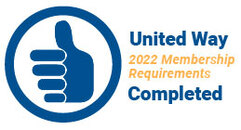|
This is the first in a series of articles about legalizing marijuana. Legalization of marijuana is a complex issue with many influencing factors and potential consequences. One often-overlooked factor is how drug schedules are developed by the Drug Enforcement Administration (DEA).
Drug scheduling is the way the United States government classifies drugs, based on their medical value, safety, and potential for abuse or addiction. Drugs and substances are divided into five categories, or schedules. Schedule 1 drugs have a high potential for addiction and abuse, with no recognized medical value in the United States. On the other end of the scale, Schedule 5 drugs have low potential for addiction and misuse, and are generally accepted as safe for medical use. In general, the higher a drug is classified, the more federal restrictions and the more severe the criminal penalties for possessing it. Any drug listed on the DEA schedule is considered a controlled substance. If a drug is classified as a Schedule 1 or 2 drug, there are severe regulatory restrictions on its research, supply and access. The main difference between a Schedule 1 and 2 drug is that Schedule 1 drugs are considered to have no medical value while Schedule 2 drugs have some medical value. For example, schedule 1 drugs include heroin, LSD, marijuana, ecstasy, and peyote; Schedule 2 drugs include Vicodin, cocaine, methamphetamine, methadone, Dilaudid, Demerol, OxyContin, fentanyl, Dexedrine, Adderall, and Ritalin; Schedule 3 drugs include codeine, ketamine, anabolic steroids, and testosterone; Schedule 4 drugs include Lorcaserin, Xanax, Soma, Darvon, Darvocet, Valium, Ativan, Talwin, Ambien, and Tramadol; and Schedule 5 drugs include Robitussin AC, Lomotil, Motofen, Lyrica, and Parepectolin. Many are surprised to find that marijuana is a Schedule 1 drug and methamphetamine (meth) is a Schedule 2 drug. A frustration of those in favor of medical marijuana is that having a schedule 1 classification limits the amount of research that can be done to substantiate its medical value. This becomes a Catch-22, as proving a drug has medical value requires large-scale controlled clinical trials, which are limited for marijuana due to its Schedule 1 status. Others, including Mark Kleiman, believe that under the current scheduling, alcohol and nicotine would be marked as Schedule 1 substances if they were evaluated today (National Review). Another difficulty in developing scientific studies of medical use of marijuana is that all marijuana used for research must be obtained from the only approved grow site in the United States at the University of Mississippi (approved through the National Institute of Drug Abuse). Even though medical marijuana is legal in 23 states, marijuana sold legally under state law remains illegal federally, and prohibited for research use under federal guidelines. Some argue that even if marijuana was moved to Schedule 2, a prescription would be required to legally dispense it and that would complicate state-legal marijuana dispensaries and retail stores already established in states with legalized marijuana. Recently, H.R.3884 - Marijuana Opportunity Reinvestment and Expungement Act of 2019, a comprehensive marijuana reform law, was introduced to Congress to decriminalize and de-schedule marijuana. At the time of this writing, it was passed by the House Judiciary committee and awaits vote in the House and Senate. These are only a few of the complexities concerning the legalization of marijuana. Next time we will discuss arguments from both sides of the marijuana debate. https://www.nationalreview.com/2019/07/mark-kleiman-was-the-nations-greatest-thinker-on-drug-policy/
0 Comments
Your comment will be posted after it is approved.
Leave a Reply. |
AuthorLynn Saylor is the AmeriCorps member working with the United Against Opioid Abuse Initiative alongside the White County United Way. She is a major facilitator of the United Council on Opioids serving White County and a regular contributor to local media. Archives
October 2020
Categories
All
|

 RSS Feed
RSS Feed
